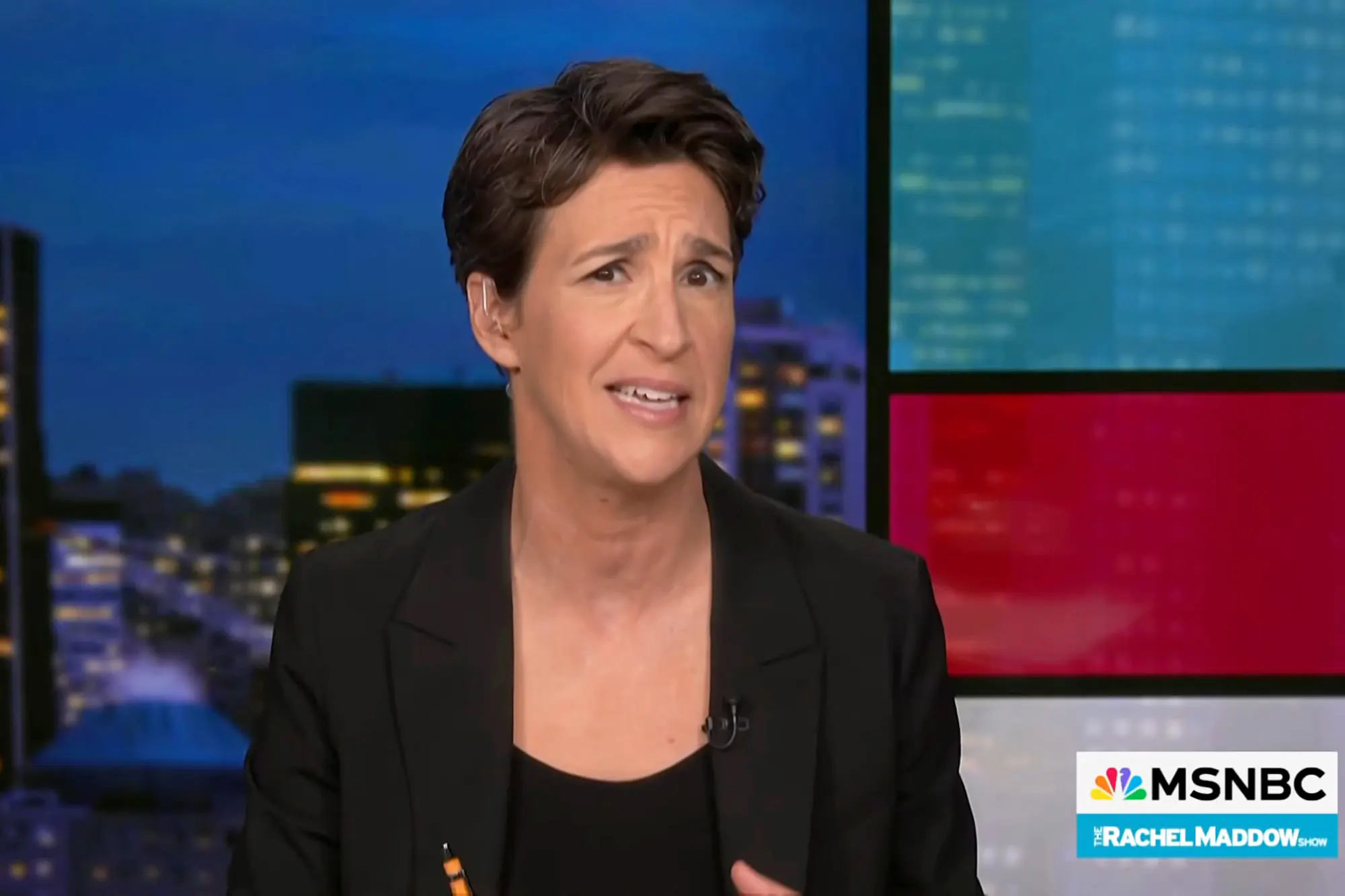MSNBC, a longtime player in the cable news industry, is facing serious challenges as it struggles to hold onto viewers following Donald Trump’s re-election. At the center of the network’s woes is Rachel Maddow, once a ratings juggernaut, whose diminished role has coincided with a steep decline in MSNBC’s primetime audience.
Maddow’s Role Shrinks as Ratings Tumble
Since Trump’s re-election, MSNBC’s ratings have dropped by a staggering 54%, with many former viewers gravitating toward Fox News, which has experienced a 61% surge. Rachel Maddow, previously the network’s most recognizable personality, now hosts her show just once a week on Monday nights. The rest of her time is devoted to producing podcasts and documentaries. While this transition aligns with Maddow’s interests, it has left a void in MSNBC’s primetime lineup.
Salary Adjustments Amid Financial Restructuring
Amid the ratings downturn, Maddow’s annual salary has been reduced by $5 million to $25 million. Parent company Comcast, seeking to restructure its media holdings, has spun off MSNBC and other channels into a new entity. While these changes aim to stabilize finances, they’ve raised concerns about layoffs and the network’s long-term direction.
Rise of Alternative Media
Part of MSNBC’s struggle lies in the rise of alternative media platforms. Personalities like Joe Rogan and independent creators on YouTube have drawn audiences seeking fresh perspectives outside the mainstream media. This shift has been particularly pronounced among younger viewers, further eroding the dominance of traditional networks like MSNBC.
Future of MSNBC
As the network recalibrates, the challenges are significant. Maddow’s reduced presence, combined with the broader decline in cable news viewership, places MSNBC at a crossroads. Moving forward, the network must not only adapt to changing audience preferences but also rebuild trust and loyalty in an increasingly competitive media landscape.
Sources:
- MSNBC Ratings Plunge After Trump Election Victory
- Rachel Maddow Takes $5 Million Pay Cut in New MSNBC Contract
- MSNBC’s Rachel Maddow’s Salary Reportedly Cut by $5M
- Hollywood Faces a Reboot of the Trump Show

